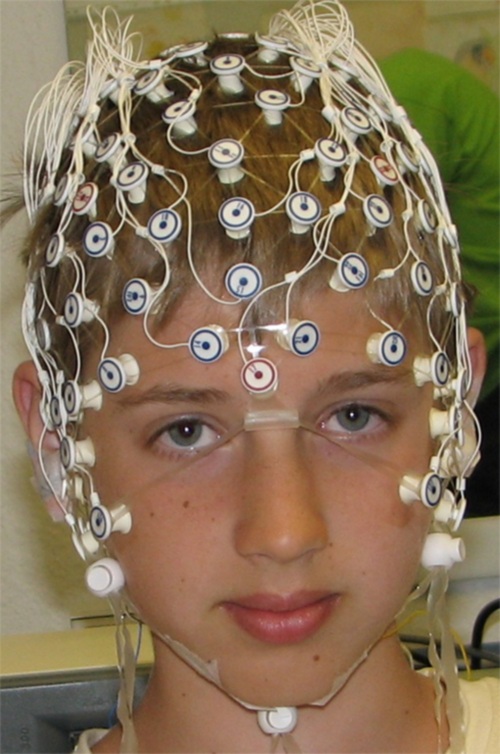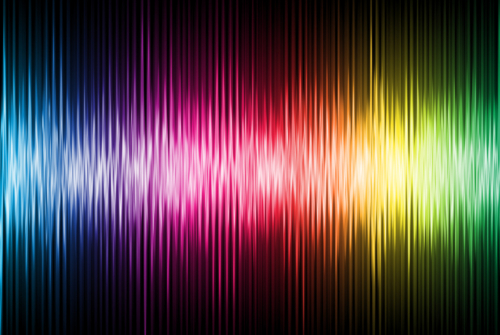While past research on the topic of sleep indicates that applying a “gentle electric current” can ease the brain into deep sleep mode, improve overall sleep quality, and increase memory retention, the technology has failed to take off, due in large part to there being no real audience out there interested in applying electrodes to their head for a better night’s rest.

Patient with electrodes attached to his study for a sleep study. (Via: frontiersin.org)
As a result, researchers have long been searching for alternative methods to accomplishing all of the aforementioned benefits sans electrodes.
A breakthrough in this regard is believed to have recently been discovered by a group of German researchers who conducted a sleep study using a peculiar new application referred to as “pink noise.”
What is pink noise?
The term refers to a random signal that is filtered so as to have equal energy per octave. In order to keep the energy constant across all octaves, the signal’s power spectral density deceases as its frequency increases. This sort of balancing act is why “pink noise” is also sometimes referred to as “1/f noise.”
In terms of decibels, the decrease is about 3 dB per octave on the magnitude spectrum.
As for the name, “pink noise” is a reference to the color that comes from the visible light spectrum which — you guessed it — turns pink when a similar spectral distribution is applied.

The study
The group of German researchers recruited 11 participants who spent two nights in a sleep lab. On the first night, as each one of the 11 approached deep sleep, the researchers played pink noise that was specially synchronized to match the brain rhythm of the individual.
As a control, no sound was played on the second night.
To measure the effectiveness of the technology, the 11 participants were shown 120 pairs of words before going to sleep on both nights. The following morning, they were individually quizzed to see how many pairs they could recall.
The results
The study showed that the pink noise lengthened the time each participant spent in “deep sleep” and also increased the size of the subject’s brain waves during that time.
Now, it should be noted that slower, longer-lasting brain waves — characterizations of deep sleep — are associated with information processing and memory formation. And sure enough, an increase in time spent overnight in this pattern had a positive impact on each participant’s memory, as was evidenced in the amount of word pairings that could be recalled — 22 following the pink noise night to 13 following a regular night of rest.
Outlook
Sound stimulation has been tried before, but it’s often failed. According to the group, the difference with this particular study and what made it so much more effective than those conducted in the past is timing the frequency of the pink noise with the brain waves of each participant.
That said, the technique does still need to be improved upon to see if it could be used to improve sleep in general and, looking even further down the road, see if it could be used to improve brain functionality while the user is awake.
The group’s study was published under the title Auditory Closed-Loop Stimulation of the Sleep Slow Oscillation Enhances Memory in Neuron Journal .
Story via: theatlantic.com
Advertisement
Learn more about Electronic Products Magazine





